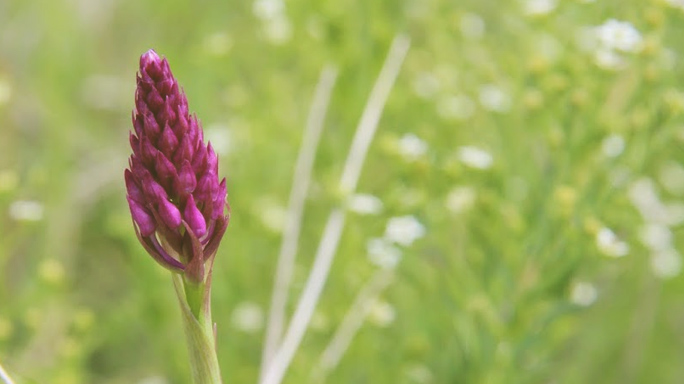
Plants
There are 1500 different plant species in Fruška Gora, 700 of which are plants with healing properties, and even 69 are protected as natural rarities of Serbia. Of the 700 herbs most are indigenous species, and a smaller number are non-native plants. Countless plant flora has been discovered in the past two centuries, which include palms, cypress, sequoia, laurel and other species that belonged here. Using the fossil data, scientists were able to reconstruct how the site changed in the last 200 million years.
Vegetation
The vegetation of Fruška Gora belongs to the forest steppe, but because of human influence, the area beneath the steppe have been protected to a lesser extend in fragments on the slopes.
Deciduous forests
The mane type of forest vegetation on Fruška gora is deciduous. The vastest forest communities are made up of oak and elm, with greatly more common white or silver lime, which represents a unique mark of the are, the only one on the old continent. Clean and pure beech and hornbeam forests are highly rare, apart from the mixed community of sessile oak and beech, beech trees and oak and hornbeams. On the southern slopes are pure and mixed forests of oak, downy oak, hornbeam and black ash. In the lower parts, mostly along the Danube and the larger streams are forests of white willow, gray willow and poplar. A very interesting plant that grows in the beech forests is the sremuš, bear or wild onions, which have great nutritional value and medicinal properties. Fresh, young leaves of Sremuš harvested in early spring are used for making delicious salads rich in vitamins.
Coniferous forests
Softwoods are present with only one indigenous species - gorse, which is part of a number of forest communities. Lesser forest communities are built out of allochthonous conifers such as black and white pine, spruce, larch, yew, thuja and others.
Meadow vegetation
Meadow vegetation is characterized by the presence of over 1,500 different species of plants, of which the most important are rare and protected species such as wild flowers, anemones, narrow-leaved peony, iris steppe, spikenard, Dafne blagayana, Staphylea pinnata L, Sternbergia colchiciflora and many others. The variety of Fruška Gora's meadow flora is an ideal area for beekeepers who use this wealth to create natural honey and "royal nectar" - beneficial royal jelly. Fruška Gora is characterized by the presence of 16 species of orchids, and it is important to note that because of the negative impact of man on nature just as many species disappeared from this area.
Ferns

Ferns are represented by 32 species in 15 genera, of which six species on the list of natural rarities Serbia. The largest genera are horsetail (six species) and Malvaceae (seven species), and the most widespread species are hot or male fern, bracken fern, and winter and black Malvaceae.
Mushrooms

The place where the land is not treated, such as grasslands, marshes, flooded meadows and forests, are an ideal area for over 500 species of registered fungi. Fungi play an important role in the cycling of energy and matter in nature, as mineralizers of organic matter. The most famous edible fungi are sunstroke, peppermint thrush, chanterelle, Calocybe gambosa, guinea fowl, large Coprinus Comatus, Poland meadow mushroom, forest meadow mushroom, Agrocybe aegerita, wood blewit, real porcini, morels, brown trumpet and kripavac. In addition to nutrients, mushrooms Pleurotus ostreatus and winter velurka have medicinal properties. Deadly poisonous mushrooms are Amanita phalloides, the most poisonous mushrooms in Serbia, and panterovka, while the less toxic are yellow phalloides, fly agaric, Boletus satanas and Russula emetica.
Vine

Fertile land on the edges of the mountains, the temperate climate and the favorable impact of the Danube are excellent conditions for growing edible vines. Viticulture Fruška Gora is one of the oldest on the continent and is 1700 years old, when the noble first vines were planted on fertile ground by the Roman Emperor Marcus Aurelius Probus, on the site of today's Fruska Gora village Neštin. The present varieties are the cormorant, portugizer, italian riesling, riesling, gewurztraminer, Sauvignon, neoplanta, parishioner, force, a lisa, petra, franconia, merlot and probus, all used to make samely-named wine. In basements found on Fruška Gora, the most common is a sweet dessert wine of exceptional quality - flavored bermet, and the recipe for making it is kept by producers like a precious family secret and transmitted only to new generations who continue the family tradition of winemaking. Wines from Fruška Gora are of exceptional quality, which you can taste in the wine cellars Čerević, Banoštor, Neština, Erdevik, Irig and many other places near the mountain.

Comments
Facebook
DISQUS